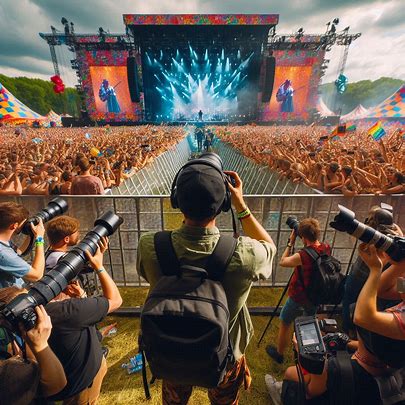 Few homeowners realize that their floors may harbor more than dust and dirt. Beneath the clean surface of tile floors lies a hidden world teeming with microscopic life. Between those narrow grout lines, layers of bacteria, mold spores, and unseen residues build up over time, forming colonies that could compromise both your home’s beauty and your health.
Few homeowners realize that their floors may harbor more than dust and dirt. Beneath the clean surface of tile floors lies a hidden world teeming with microscopic life. Between those narrow grout lines, layers of bacteria, mold spores, and unseen residues build up over time, forming colonies that could compromise both your home’s beauty and your health.
Professional cleaners often say the grout tells the story of a home’s hygiene. What looks like a slight discoloration may actually be a film of bio-contaminants clinging to porous surfaces. Regular scrubbing barely touches this layer, which is why expert tile and grout cleaning services often uncover grime far beyond what the naked eye can detect.
The Hidden Habitat of Grout
Grout is more than just a filler between tiles, it’s a sponge for dirt and moisture. Because grout is porous, it easily absorbs water and organic material. This environment becomes the perfect breeding ground for bacteria and mold. When moisture seeps in, it carries microscopic particles from food, soap, and dust, feeding colonies that thrive in dark, damp areas.
Health experts warn that mold in grout isn’t just an eyesore, it’s a silent intruder. Studies show that prolonged exposure to mold spores can trigger allergies, asthma, and other respiratory issues. In kitchens, these microbes may even contaminate food preparation areas, while bathrooms become hotbeds for fungal growth if left untreated.
What the Professionals Discover
When professionals lift the grime, they often find more than simple dirt. Teams equipped with high-pressure steam systems and pH-balanced cleaners often uncover grease layers, mildew blooms, and even colonies of black mold beneath the surface. For homeowners dealing with similar contamination after water-related incidents, it’s important to seek expert flood damage cleaning in Brisbane and nearby areas to prevent further health risks.
One cleaning technician described it as “peeling back a layer of the home’s history.” He explained how years of residue from soap scum, spilled drinks, and humidity can create a sticky film that traps new debris. Removing this buildup doesn’t just brighten tiles; it restores indoor air quality and prevents bacterial regrowth.
The Science Behind the Shine
Advanced cleaning methods use both chemistry and physics to fight grime. Professional-grade cleaners rely on hot water extraction and eco-safe detergents that dissolve the bond between dirt and grout. Steam penetrates deep into pores, lifting residues that would otherwise stay trapped. Some technicians even use antimicrobial sealants afterward to block future contamination.
The difference between DIY cleaning and professional care lies beneath the surface. While home cleaning products can handle visible stains, they often fail to kill the bacteria hidden below. This leaves a deceptive shine that quickly fades as the microbes resurface. Experts recommend deep cleaning at least twice a year to maintain hygiene and prevent discoloration.
How to Keep Your Grout Clean Longer
Maintenance doesn’t stop after a professional service. Homeowners can take a few preventive steps to keep grout lines cleaner between visits:
- Wipe floors regularly with a mild cleaning solution to reduce surface buildup.
- Ensure good ventilation in bathrooms and kitchens to limit moisture.
- Apply a quality grout sealer to prevent water and bacteria penetration.
- Address spills immediately to stop staining and bacterial growth.
Simple habits can make a big difference. Regular maintenance not only preserves the look of your floors but also prevents the microbial buildup that professionals often find lurking beneath.
The Bigger Picture: Health and Aesthetics
Clean grout does more than make tiles sparkle, it protects your home’s ecosystem. Every footstep and splash adds to the unseen accumulation of organic matter. Over time, this contamination doesn’t just dull your floors; it affects the overall cleanliness of your living space. Professionals emphasize that true cleanliness starts from the ground up.
Understanding what lies hidden beneath the surface changes how we see our homes. When bacteria and mold go unchecked, they quietly compromise indoor air and trigger recurring odors. Through professional tile and grout cleaning, homeowners uncover the truth beneath their tiles, a story of hidden buildup, silent invaders, and the science that keeps them at bay.
In the end, cleanliness isn’t just about what meets the eye, it’s about what lies beneath. By addressing what’s unseen, homeowners can maintain not only the beauty of their tiles but also the health of their environment. A thorough tile and grout cleaning reveals more than dirt; it uncovers the peace of mind that comes with knowing your home is truly clean.





 Large events like music festivals, sports championships, or political rallies draw thousands of people. They also attract journalists eager to capture every moment. Yet, without proper organization, chaos can disrupt their work. Fencing provides a simple yet effective solution. It creates designated media zones, ensuring journalists can report safely and efficiently while keeping the public secure.
Large events like music festivals, sports championships, or political rallies draw thousands of people. They also attract journalists eager to capture every moment. Yet, without proper organization, chaos can disrupt their work. Fencing provides a simple yet effective solution. It creates designated media zones, ensuring journalists can report safely and efficiently while keeping the public secure.
 Public education about many facets of appliance maintenance depends critically on journalism. Journalists guide homeowners toward wise decisions by offering advice on upkeep and troubleshooting as well as by stressing typical problems and fixes. News pieces, blog entries, and articles on appliance repair provide insightful analysis of industry trends, newest technologies, and repair methods.
Public education about many facets of appliance maintenance depends critically on journalism. Journalists guide homeowners toward wise decisions by offering advice on upkeep and troubleshooting as well as by stressing typical problems and fixes. News pieces, blog entries, and articles on appliance repair provide insightful analysis of industry trends, newest technologies, and repair methods. Webtoons can show visually striking evidence in an interesting and instructive manner. Incorporating maps, graphs, and other graphic components helps artists to support their arguments and set context. Investigative journalism may thus become more immersive and interesting, motivating readers to actively participate in the narrative process.
Webtoons can show visually striking evidence in an interesting and instructive manner. Incorporating maps, graphs, and other graphic components helps artists to support their arguments and set context. Investigative journalism may thus become more immersive and interesting, motivating readers to actively participate in the narrative process.








 Traveling by train is a unique and enjoyable way to explore new destinations, offering stunning views and an opportunity to connect with local people. Train travel allows you to relax, unwind, and take in the scenery while meeting other travelers and locals, sharing stories, and
Traveling by train is a unique and enjoyable way to explore new destinations, offering stunning views and an opportunity to connect with local people. Train travel allows you to relax, unwind, and take in the scenery while meeting other travelers and locals, sharing stories, and 






 In a job interview, you have to research the company and what kind of personalities they are after. The first step is to review the materials that the company has shared about itself. This will give you an overview of the culture, values, and work-life balance that they offer.
In a job interview, you have to research the company and what kind of personalities they are after. The first step is to review the materials that the company has shared about itself. This will give you an overview of the culture, values, and work-life balance that they offer.




